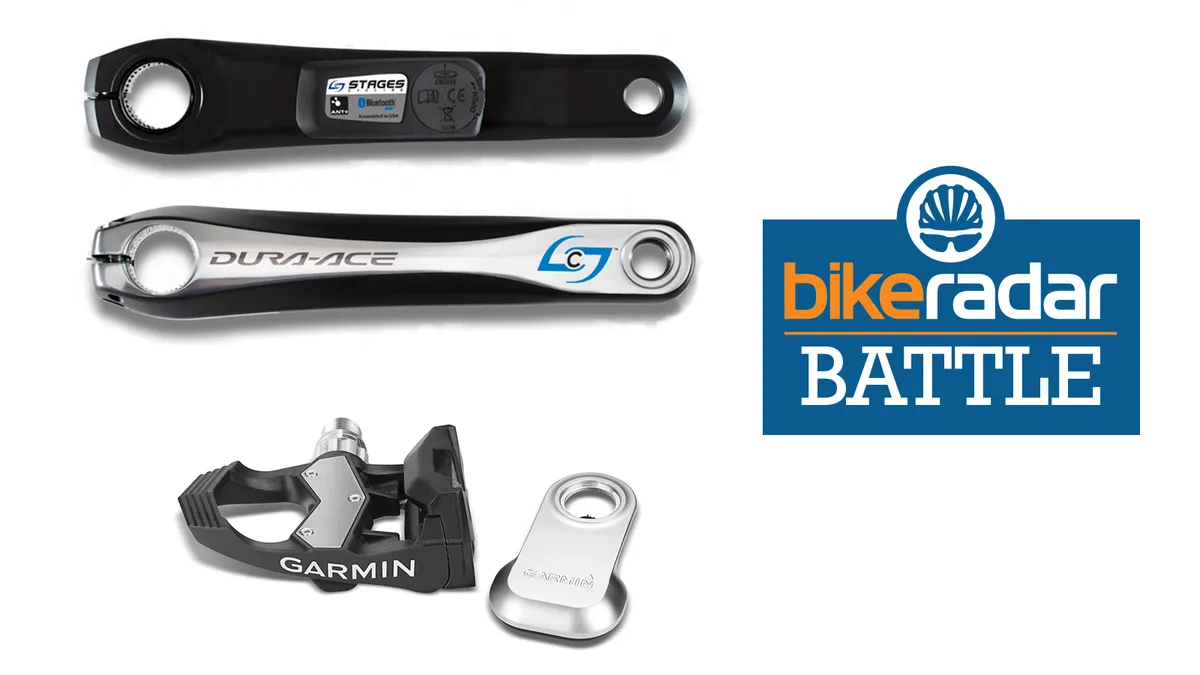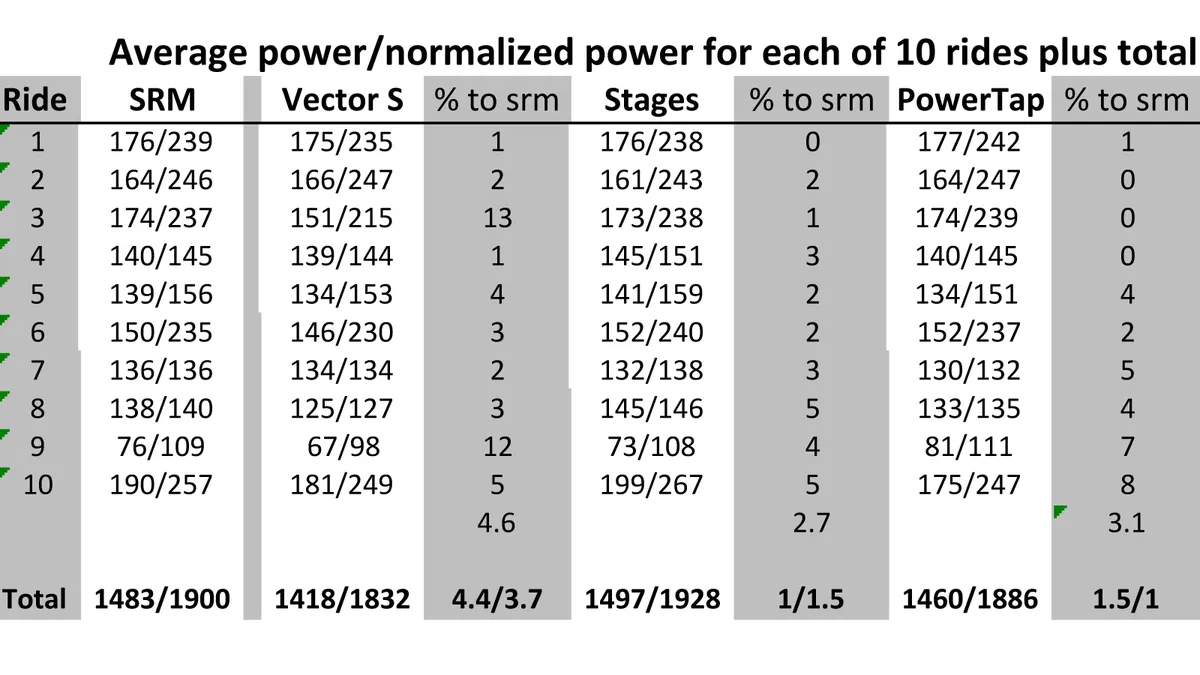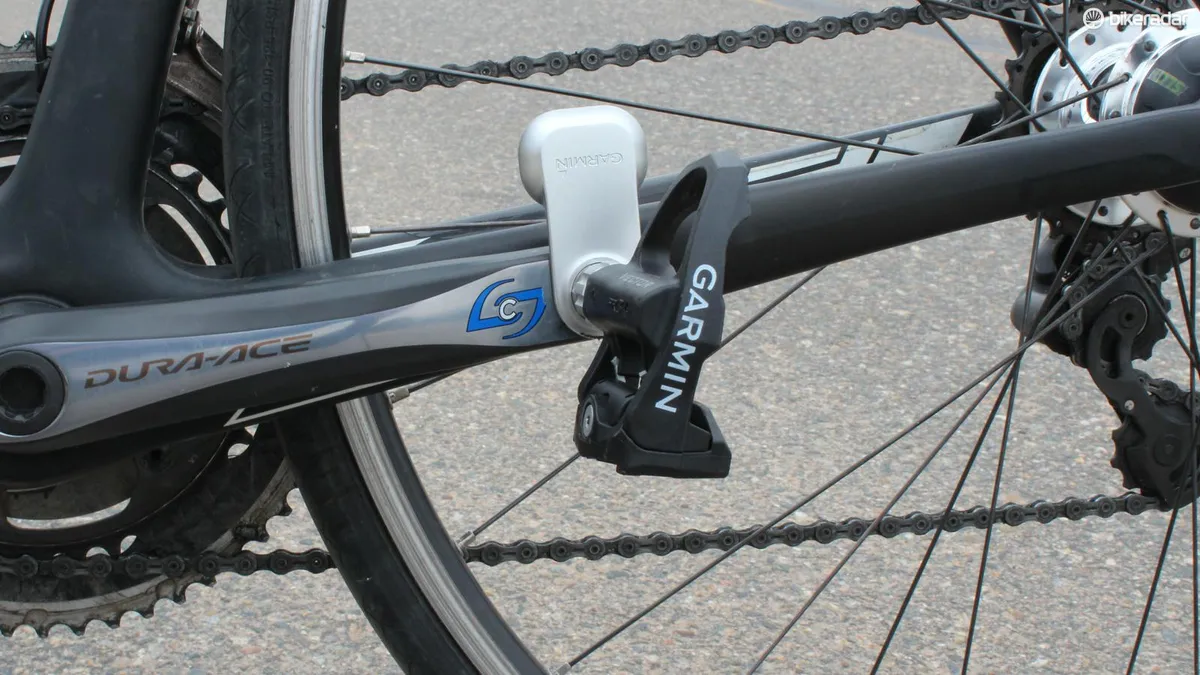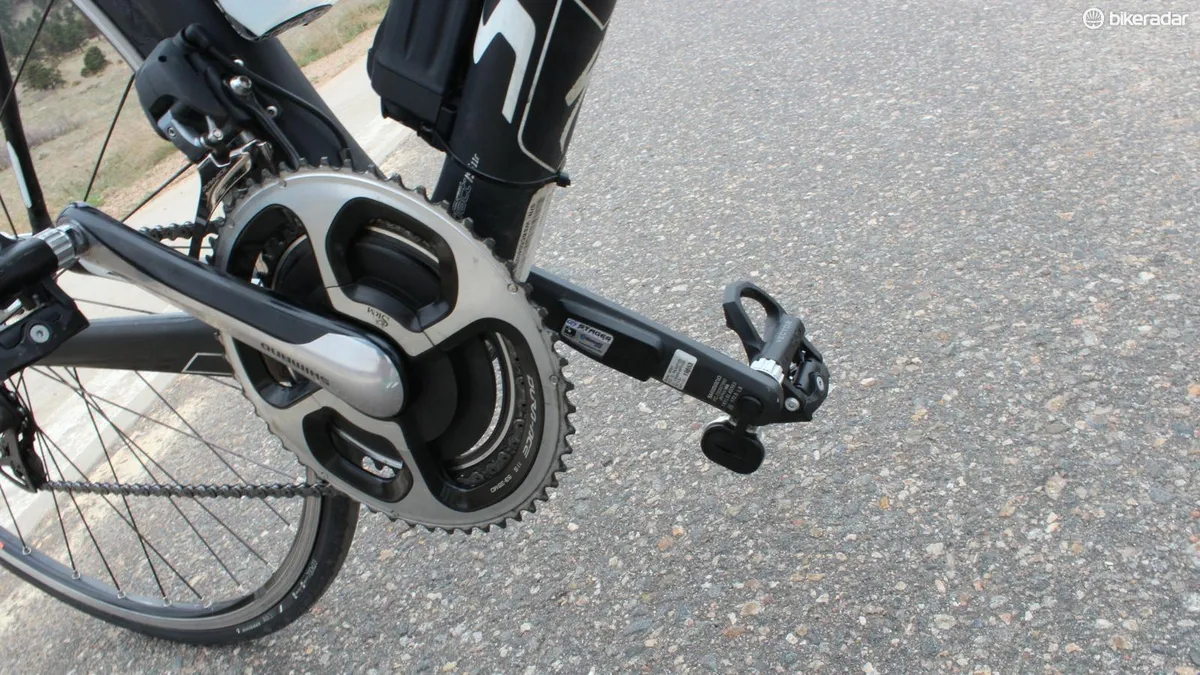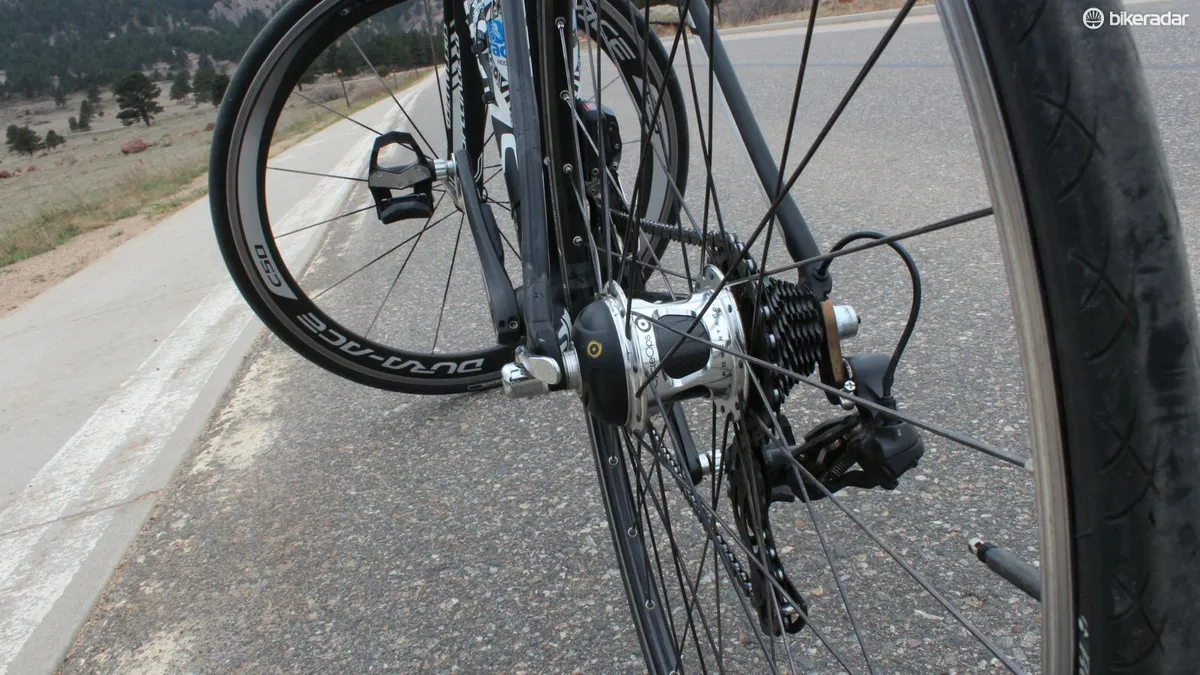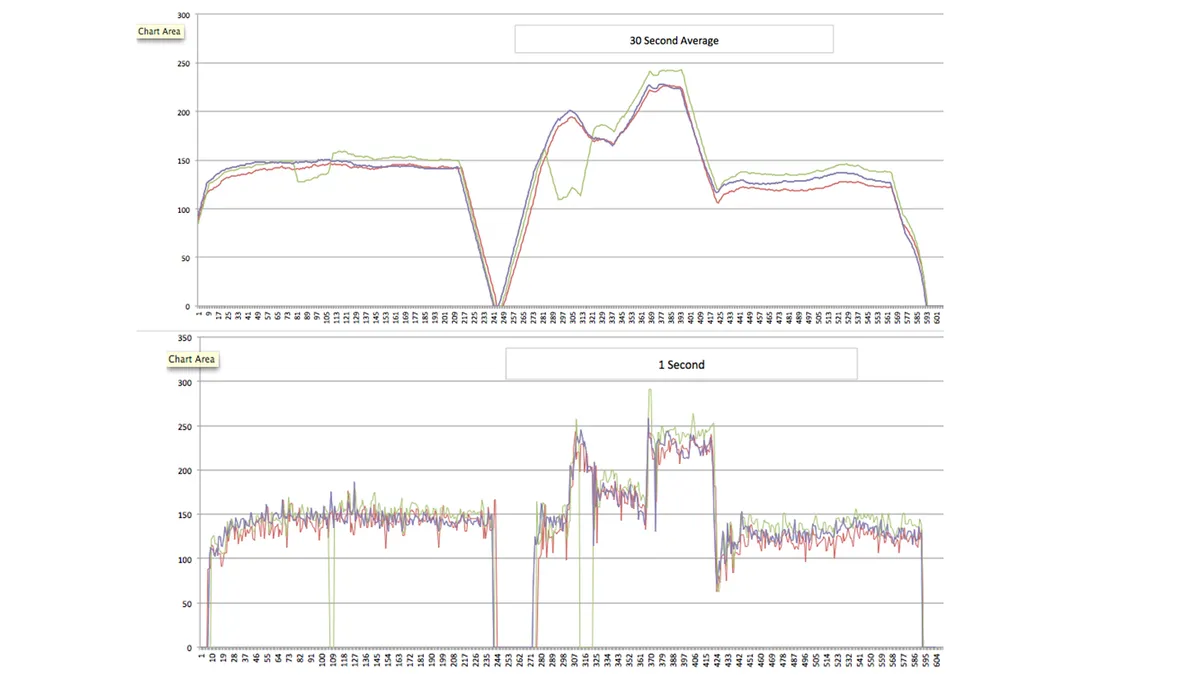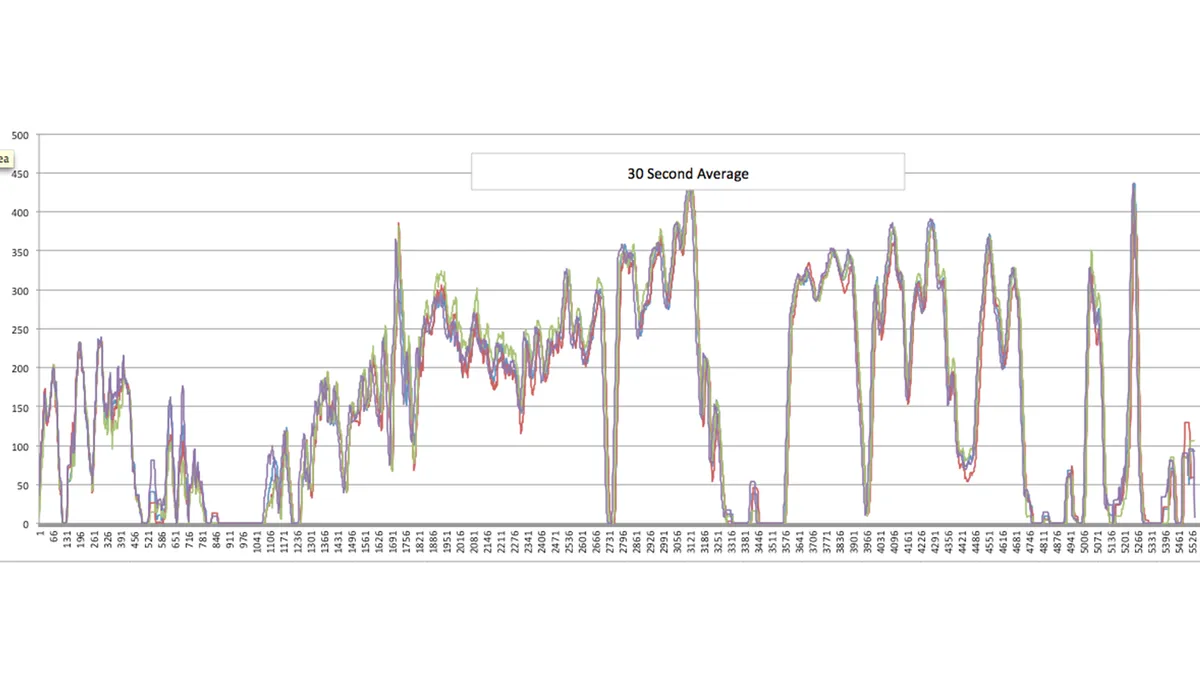Two years ago Stages created a niche within the power meter category with a left-side-only power meter. Last year, Garmin joined the party with its left-pedal Vector S power meter. So which is better? I put the two head-to-head, with a month of simultaneous ride recording using an SRM as the control and a PowerTap for context.
Speaking of context, I’ve had a Stages meter on a personal bike for two years now, and have ridden the dual-sided Vector system quite a bit, too. Beyond that, I’ve trained with power meters for 14 years. In that time, I’ve come to value long-term durability and consistency; I just want a reliable tool, as I suspect you do.
Video: we tested the stages 7900 and garmin vector s simultaneously for more than two months
Both the Stages and the Vector S use the simple formula pioneered by the former: measure power at the left leg and double it. Below, I've included four-way data (Stages/Vector S/SRM/PowerTap) from 10 rides. But before we get into the numbers, let’s break down the good, the bad and the ugly for each.
Weight – Stages 14g; Vector S 44g
Neither carry much of a weight penalty. Our Stages-equipped Shimano Dura-Ace 7900 crankarm weighs 14g more than a standard 7900 one. And with the Vector S left pedal weighing 152g and the pod 22g, it is about 44g more than a left Look KeO 2 Max – or a Shimano Ultegra, for that matter. (For reference, Look’s dual-sided power meter weighs a claimed 170g per pedal.) Yes, you can get much lighter pedals – Look’s Keo Blade 2 Ti weighs a feathery 90g – but we’ll mark the difference over standard pedals.
Winner: Stages
Price – Stages US$899 / £799; Vector S US$899 / £749
Stages power meters can be had for between US$699 and US$899, depending on the model. Vector S comes in one model, but you can upgrade to a dual-side system later with a right pedal for US$699.
Winner: Tie

Like all power meters, the Stages and Vector S bring compatibility issues
Bike compatibility – Stages, within crank brand family; Vector S, within two types of crank shapes
Stages sells metal crankarms for SRAM, Shimano, FSA and Cannondale. You can put any Stages-equipped SRAM arm on almost any SRAM crank, like a Rival on a Red, for instance. But you can’t put an FSA arm on a Cannondale crank, or a Shimano arm on a SRAM, because of bottom bracket incompatibility.
Vector S comes in two styles, one to fit standard cranks with a width of 12-15mm and one to fit wide arms of 15-18mm thick. You can’t put the 12-15 pod on the wider cranks or vice versa, as I learned that the hard way. (Read: I broke the connection strap of a 12-15 pod trying to install it on Specialized cranks.) As long as you pick the width correctly, you can fit pretty much any crank except aggressively aero-shaped cranks.
Winner: Vector S
Pedal compatibility – Stages: anything; Vector S: Look KeO
With Stages, you can use any pedals. With Vector S, you’re locked into the Look KeO-style system made by Exustar.
Winner: Stages, unless you already prefer Look pedals
Wireless compatibility – Stages: ANT & BT; Vector S: ANT
ANT is the wireless standard now for the vast majority of GPS computers and the peripherals that talk to them, such as heart rate straps, speed/cadence sensors and power meters. ANT also happens to be owned (since 2006) by Garmin. Bluetooth began outside the sports industry, but is becoming increasingly popular on bike electronics. While each camp has its claims, the basic breakdown for now is this: ANT talks to bike computers and Bluetooth talks to smartphones and other mainstream electronics. Being able to get live power data on an iPhone app is cool but what I've appreciated more is being able to quickly update the Stages firmware from my phone.
Winner: Stages

We used a trusty SRM as one of two controls while testing the Stages and Vector S – the other was a PowerTap
Portability – Stages: torque, calibrate; Vector S: torque, calibrate, spin-down
Stages' installation is straightforward: you bolt on the crank like you normally would – ideally to recommended torque spec – and then calibrate with either a head unit like a Garmin Edge, or your smartphone.
The Vector S requires a little more attention: the pod is mounted like an outsized washer and needs to be held at about 100 degrees from the crank because it pivots as you torque the pedal down, ultimately resting at the target 90 degrees. Then you pop the electronics sleeve into the pedal spindle, and calibrate with a newer Garmin Edge computer. Beyond the static calibration, there is also a spindown calibration you need to do every time you move it to another bike.
To measure cadence, both systems trade in the traditional magnet power meters use for built-in accelerometers. This means you don’t have to glue a magnet to your frame (or frames).
Winner: Stages
Durability issues – Stages: batteries; Vector S: pods
Both systems have their Achilles' heels. For Stages, it is the battery. Whether it is water permeability at the battery door or something in the system’s coding, some Stages meters absolutely burn through batteries. I’ve used at least a dozen in two years. For Vector, it is the pods. I’ve broken two: one at the plastic strap that wraps around the crank and another at the flat plastic piece that suspends the battery and accelerometer pod. The CR 2032 batteries for Stages are about a dollar (or almost a pound) if you buy them in bulk. The Vector replacement pods, however, are US$100 / £50 a pop. Ouch.
Winner: Tie
Data consistency – Stages within 1% of SRM; Vector S 4%
With power comparisons, there are always caveats. At BikeRadar we eliminate as many variables as possible, but a perfect comparison isn't always possible. Why? The ANT protocol allows for a little data leakage between meter and head unit. While meters send data four times a second, Garmins record once a second. And data packets can be dropped. Consider this: in the past I paired four Garmin Edge 500 units to one SRM. The four head units recorded between 1- to 2-watt variations in average power, and up to 26-watt differences in maximum power. Finally, in comparing one meter to the other, how do you know which if any is right? Without a lab, you simply don't. The best we can do is run multiple meters with identical settings and note trends.
That said, we chose SRM and PowerTap because both have measured consistently over long-term testing. Comparing Stages and Vector S to SRM, the Stages tracked more closely to the reference meters.
Looking at the 10 rides below individually, you can see there were two rides where the Vector S was off by more than 10 percent over the course of the ride. Was this because the pre-ride calibration was faulty? Because of a change in weather? Because of some other unknown factor? Who knows – but as a rider, I don’t want to have to play detective; I just want the gear to work.

In addition to looking at the data in whole, I also compared each ride's 1-second and 30-second averages. This is the 30-second average of Ride 3
Looking at the rides individually, you can also see that Stages reads a little high compared with the SRM. This is particularly curious as I know my left leg is weaker than my right (through months of riding with the standard Vectors, Pioneer and Infocrank).
Still, bottom line: In the big picture, the Stages meter tracked much closer to the SRM than the Vector S.
Winner: Stages

Bottom line - Stages is better overall
Neither of these power meters is perfect, but both are good training tools. You can train effectively with either. For my money, though, I'd go with the Stages because it's super light, I can use my preferred Shimano SPD-SL pedals (and XT pedals during ’cross season), it's forward-looking and easily updatable with Bluetooth, and, last but not least, its data seems more reliable than the Vector S.
Overall winner: Stages
For a look at more comparative data from individual rides, look through the gallery above.
<!-- /* Font Definitions */ @font-face {font-family:Times; panose-1:2 0 5 0 0 0 0 0 0 0; mso-font-charset:0; mso-generic-font-family:auto; mso-font-pitch:variable; mso-font-signature:3 0 0 0 1 0;} @font-face {font-family:"MS 明朝"; mso-font-charset:78; mso-generic-font-family:auto; mso-font-pitch:variable; mso-font-signature:-536870145 1791491579 18 0 131231 0;} @font-face {font-family:"Cambria Math"; panose-1:2 4 5 3 5 4 6 3 2 4; mso-font-charset:0; mso-generic-font-family:auto; mso-font-pitch:variable; mso-font-signature:-536870145 1107305727 0 0 415 0;} @font-face {font-family:Calibri; panose-1:2 15 5 2 2 2 4 3 2 4; mso-font-charset:0; mso-generic-font-family:auto; mso-font-pitch:variable; mso-font-signature:-520092929 1073786111 9 0 415 0;} @font-face {font-family:Cambria; panose-1:2 4 5 3 5 4 6 3 2 4; mso-font-charset:0; mso-generic-font-family:auto; mso-font-pitch:variable; mso-font-signature:-536870145 1073743103 0 0 415 0;} /* Style Definitions */ p.MsoNormal, li.MsoNormal, div.MsoNormal {mso-style-unhide:no; mso-style-qformat:yes; mso-style-parent:""; margin:0in; margin-bottom:.0001pt; mso-pagination:widow-orphan; font-size:12.0pt; font-family:Cambria; mso-ascii-font-family:Cambria; mso-ascii-theme-font:minor-latin; mso-fareast-font-family:"MS 明朝"; mso-fareast-theme-font:minor-fareast; mso-hansi-font-family:Cambria; mso-hansi-theme-font:minor-latin; mso-bidi-font-family:"Times New Roman"; mso-bidi-theme-font:minor-bidi;} h1 {mso-style-priority:9; mso-style-unhide:no; mso-style-qformat:yes; mso-style-link:"Heading 1 Char"; mso-margin-top-alt:auto; margin-right:0in; mso-margin-bottom-alt:auto; margin-left:0in; mso-pagination:widow-orphan; mso-outline-level:1; font-size:24.0pt; font-family:Times;} span.Heading1Char {mso-style-name:"Heading 1 Char"; mso-style-priority:9; mso-style-unhide:no; mso-style-locked:yes; mso-style-link:"Heading 1"; mso-ansi-font-size:24.0pt; mso-bidi-font-size:24.0pt; font-family:Times; mso-ascii-font-family:Times; mso-hansi-font-family:Times; mso-font-kerning:18.0pt; font-weight:bold;} .MsoChpDefault {mso-style-type:export-only; mso-default-props:yes; font-family:Cambria; mso-ascii-font-family:Cambria; mso-ascii-theme-font:minor-latin; mso-fareast-font-family:"MS 明朝"; mso-fareast-theme-font:minor-fareast; mso-hansi-font-family:Cambria; mso-hansi-theme-font:minor-latin; mso-bidi-font-family:"Times New Roman"; mso-bidi-theme-font:minor-bidi;} @page WordSection1 {size:8.5in 11.0in; margin:1.0in 1.25in 1.0in 1.25in; mso-header-margin:.5in; mso-footer-margin:.5in; mso-paper-source:0;} div.WordSection1 {page:WordSection1;} --
